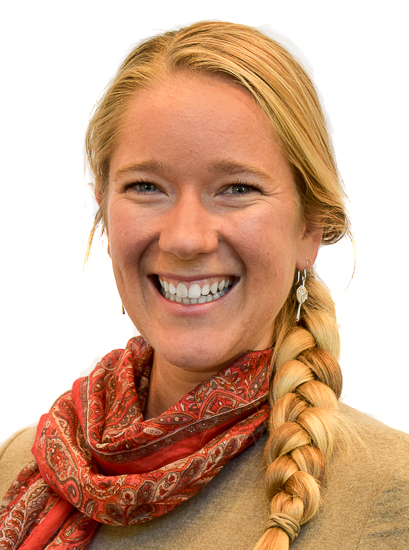
“Stewardship” is increasingly used to describe responses to environmental challenges, but there are different opinions about its meaning and purpose. A new study maps out the many meanings of the term “stewardship” and how they can be used more constructively together. Photo: A. Tedeholm/Azote
Bildtext får vara max två rader text. Hela texten ska högerjusteras om den bara ska innehålla fotobyline! Photo: B. Christensen/Azote
Sustainability concepts
Stewardship: a user’s manual
Why the concept of stewardship offers a platform for collaboration and dialogue between actors, even with differing perspectives
- “Stewardship” is increasingly used to describe responses to environmental challenges, but there are different opinions about its meaning and purpose
- The researchers identified four categories in which the term have been used in science literature
- Once these four categories were defined they developed a framework for connecting them, providing a shared language to navigate any tensions between different interests
The British evolutionary biologist John Maynard Smith once said “I think we invent jargon because it saves times talking to one-another.” Spare a thought then for sustainability scientists trying to collaborate across disciplines. “Stewardship” is increasingly used to describe responses to challenges like biodiversity loss, pollution and land-use change.
But there are different opinions about its meaning and purpose, making it hard to develop a common ground for dialogue.
In a study recently published in Landscape and Urban Planning, former centre PhD student Johan Peçanha Enqvist teamed up with centre researchers Simon West, Vanessa Masterson, Jamila Haider, Uno Svedin and Maria Tengö to map out the many meanings of the term “stewardship” and how they can be used more constructively together.
We hope that a shared language and concepts helps navigate any tensions between different applications of stewardship.
Johan Peçanha Enqvist, lead author
Four central categories
To do this, the authors first conducted a literature review before clustering the use of the term into four categories: Ethic, Motivation, Action and Outcome.
The most common use of the term is to view stewardship as Action, as a specific kind of activity, practice or initiative by particular actors often intended to achieve a perceived (environmental) benefit. A large proportion of these papers discuss stewardship in terms of specific policies, programmes or legislations that require participants, citizens or those otherwise affected – to commit to certain activities.
Ethic papers instead approach stewardship as sets of moral guidelines, virtues or philosophical principles that inform or shape human relations with the environment. For instance, stewardship can involve responsibility for something or responsibility to someone.
Motivation papers look at how stewardship is connected to peoples’ preferences and predispositions to engage in pro-environmental or sustainable behaviours such as recycling or conservation.
The fourth use of stewardship, Outcome, focuses on the result or consequences of an intervention. If it achieves certain pre-defined objectives, it qualifies as stewardship.
Once these four categories were defined, Enqvist and his colleagues developed a framework for connecting them, centred around three underlying dimensions of stewardship: care, knowledge and agency. These help understanding how different uses of the term are linked.
A shared space
Care helps to connect Ethic and Motivation, by capturing the general sense of normative directions for actions, whether they are moral principles or attitudes that guide decisions.
Knowledge helps to connect Ethic and Outcome, because it underlines the importance of understanding the landscape, resource or species population you are dealing with, and making decisions that are not just ethically desirable but also based on evidence on what the effects will be.
Agency helps to connect Motivation and Outcome, by referring to the ability of individuals, groups or states to translate desired changes into reality.
What about Action, then? In their literary review this category was the most common meaning associated to stewardship, observed in 891 of 1002 abstracts. That meant Ethic, Motivation and Outcome meanings were much more likely to occur together with Action than with each other. Put differently, everything departs from stewardship action.
The authors believe that ‘stewardship’ can be used as a “shared space” for both researchers and practitioners.
“We introduce the care-knowledge-agency framework as a means of recognizing the rich set of meanings that stewardship already has, while also helping to guide future research and practice along productive pathways,” they explain.
Rather than imposing a single definition of stewardship, the framework provides “common directions”.
“We hope that a shared language and concepts helps navigate any tensions between different applications of stewardship,” lead author Johan Peçanha Enqvist concludes.
“Our care-knowledge-agency” framework makes that tension productive by creating a useful space for collaboration.”
Methodology
The authors initiated a reading group on stewardship in 2015 at Stockholm Resilience Centre, motivated by the desire to clarify how stewardship is used and defined. Through readings and discussions, the group inductively explored this subset of the stewardship literature and identified four main applications of the stewardship concept: stewardship as an Ethic, a Motivation, an Action, and an Outcome. The authors then used these to analyse 1,002 articles in a qualitative systematic literature review.
Enqvist, J.P., West, S., Masterson, V., Haider, J.L., Svedin, U., Tengö, M. 2018. Stewardship as a boundary object for sustainability research: Linking care, knowledge and agency. Landscape and Urban Planning, Volume 179, November 2018, Pages 17-37
Simon West’s research explores how people make sense of their relationships with the natural world, in an era of complex social and environmental change.
Jamila Haider is a post-doctoral researcher studying resilience and development. Her research looks specifically at development as a process of coevolution where ecosystems and people are deeply intertwined.
Vanessa Masterson's research focuses on understanding aspects of stewardship of ecosystem services (such as local knowledge, institutions and bio-cultural diversity) in the Eastern Cape, South Africa
Uno Svedin is a senior researcher, dealing with different aspects of sustainability and resilience topics, with special application to systems, agriculture and urban issues.
Maria Tengö's research focuses on human-nature connections and implications for stewardship.







